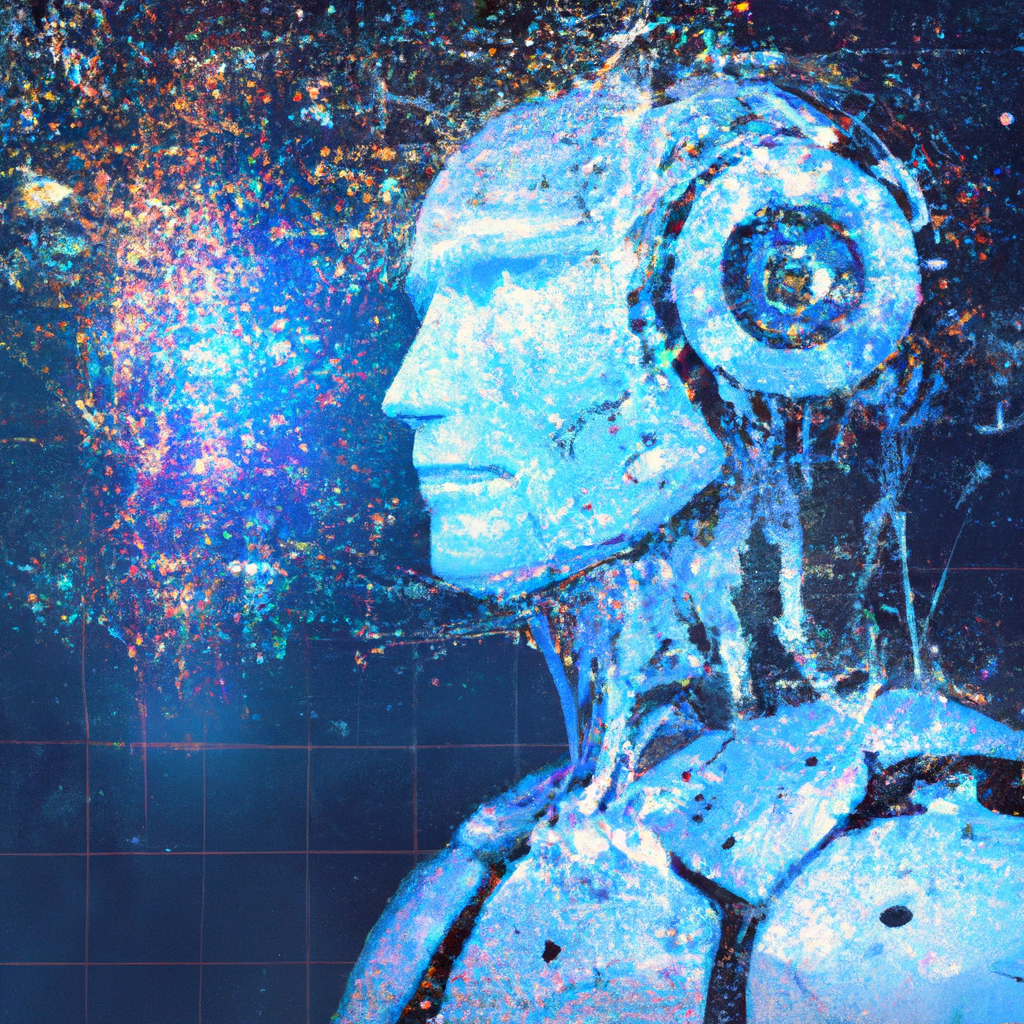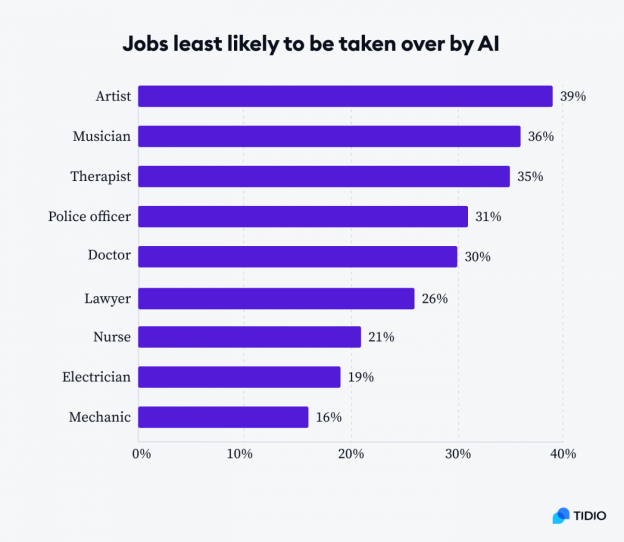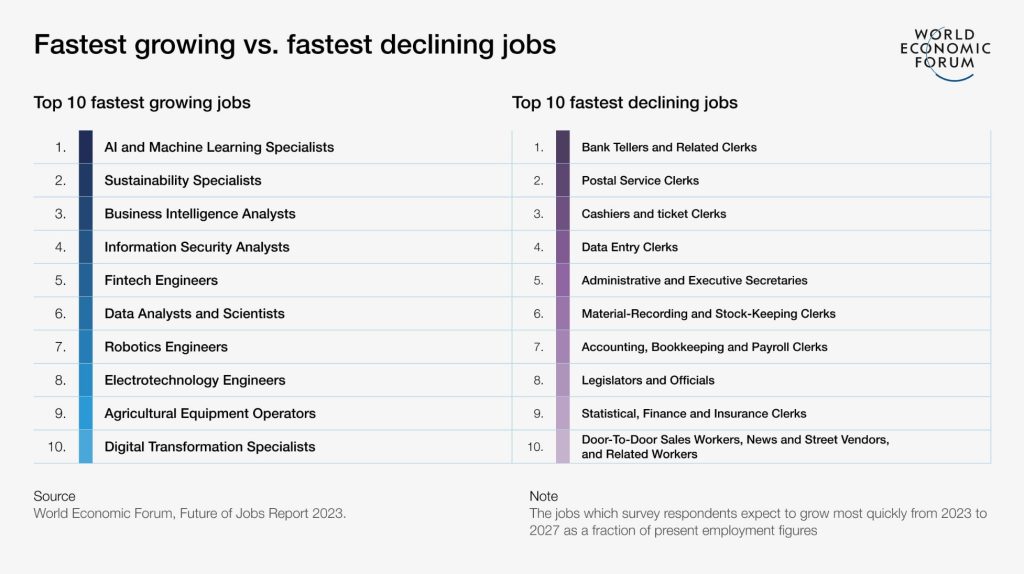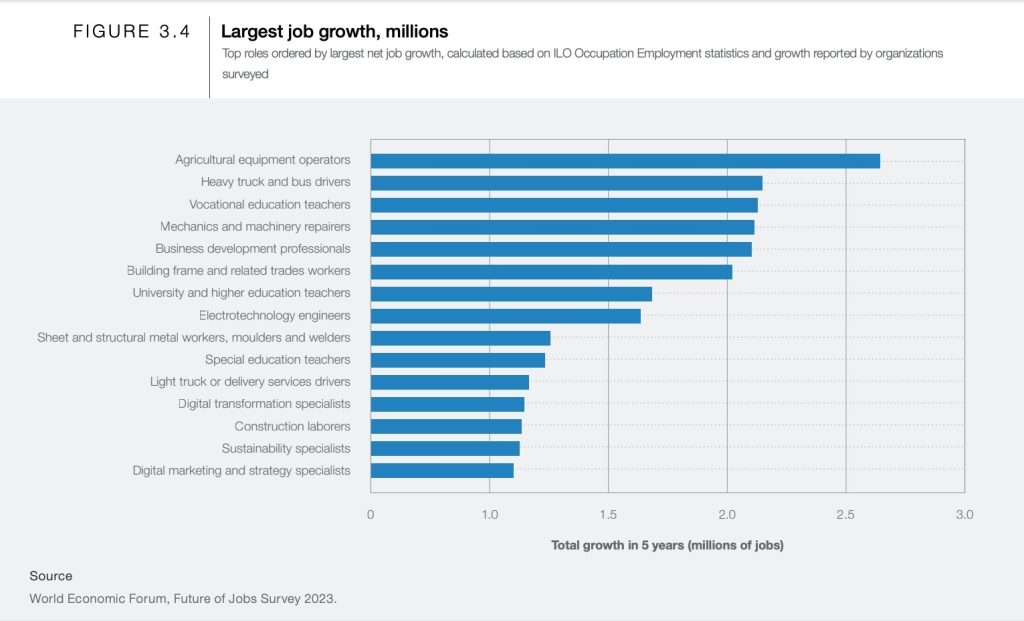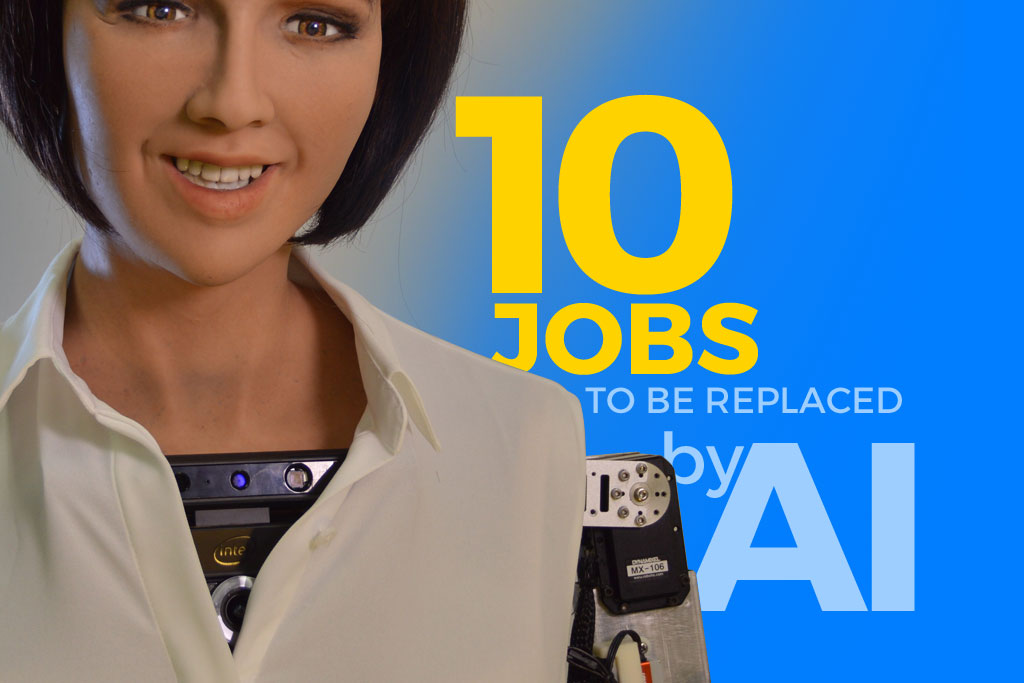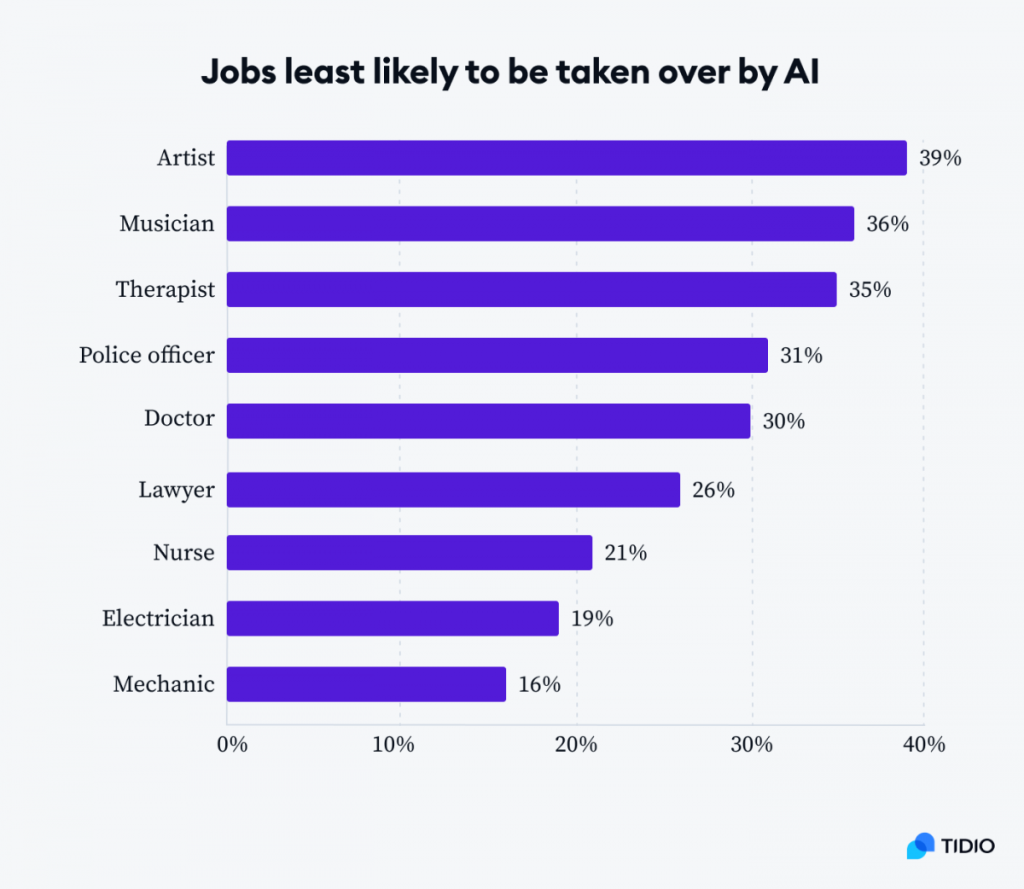Imagine a world where self-driving cars rule the roads, robots flawlessly execute complex surgeries, and AI-powered assistants effortlessly handle our every task. As we hurtle towards the year 2030, the impact of artificial intelligence on the job market is becoming an increasingly pressing topic. Will we be saying goodbye to certain professions and welcoming our new robotic colleagues? In this thought-provoking article, we explore the potential jobs that AI may replace by 2030 and delve into the implications this could have on our workforce.

This image is property of pixabay.com.
Introduction
In recent years, the rise of artificial intelligence (AI) has sparked both excitement and concern regarding its impact on the job market. As AI technology continues to advance at a rapid pace, there is increasing speculation about its potential to automate various tasks and roles that have traditionally been performed by humans. While some argue that AI will revolutionize industries and create new job opportunities, others express concerns about widespread job displacement. In this article, we will explore the current state of AI in the job market, predictions for its impact by 2030, the jobs at risk of automation, and the implications for skills, education, ethics, and the economy.
Current State of AI in the Job Market
Overview of AI applications
AI applications can be found in a wide range of sectors, including healthcare, finance, education, transportation, and customer service. Machine learning algorithms, natural language processing, robotics, and computer vision are just a few examples of AI technologies that are being deployed to automate tasks, analyze data, and make intelligent decisions. From chatbots that handle customer inquiries to autonomous vehicles that navigate our roads, AI is already playing a significant role in our daily lives.
AI’s impact on job creation
Contrary to popular belief, AI has the potential to create new job opportunities. As AI technologies continue to advance, businesses are investing in research and development, leading to the emergence of specialized roles related to AI implementation, maintenance, and customization. Additionally, the increased efficiency and productivity enabled by AI can stimulate economic growth and create jobs in industries that benefit from its advancements.
AI’s impact on job displacement
However, it is also crucial to acknowledge the potential for job displacement caused by AI. Automation can lead to the elimination of certain roles or the reduction of human labor in various industries. Repetitive and routine tasks are particularly susceptible to automation, as AI algorithms can perform these tasks faster and with fewer errors. While job displacement is a genuine concern, it is essential to assess the magnitude of the impact and identify strategies to mitigate its effects on the workforce.
Predictions for AI’s Impact on the Job Market by 2030
Expected growth of AI technology
AI technology is expected to continue its rapid growth and evolution over the next decade. As computing power improves and the availability of big data increases, AI will become more sophisticated and capable of performing complex tasks that were previously considered exclusive to humans. This growth will drive the expansion of AI applications in various industries and redefine the way work is done.
Scope of job automation
By 2030, a significant number of jobs are expected to be partially or entirely automated. Repetitive and routine tasks that can be easily defined by rules or patterns will be most susceptible to automation. Jobs in industries such as manufacturing, transportation, and customer service are likely to be heavily impacted. However, it is important to note that not all jobs can be easily automated, and certain types of work will require human skills and intelligence for the foreseeable future.
Industries most likely to be affected
While job displacement will be felt across multiple industries, some sectors are more likely to experience significant changes due to the integration of AI. Industries heavily reliant on manual labor, such as manufacturing and agriculture, are expected to witness substantial job automation. Moreover, customer service and support roles are also vulnerable to automation as chatbots and virtual assistants become more sophisticated. However, it is not just low-skilled jobs at risk; even high-skilled professions, such as legal research or data entry, can be automated to some extent.
Challenges and opportunities
The rapid advancement of AI poses both challenges and opportunities for the job market. On one hand, job displacement can result in rising unemployment rates, income inequality, and a disruption of industries. On the other hand, AI can free up human labor from mundane tasks, allowing individuals to focus on complex problem-solving, creativity, and innovation. As AI takes over repetitive and routine tasks, there is an opportunity for humans to upskill and transition into new roles that require uniquely human capabilities.
Jobs at Risk of Automation
Repetitive and routine tasks
One of the primary aspects of work that AI is poised to automate is repetitive and routine tasks. These tasks often involve following predetermined rules, patterns, or procedures, making them relatively straightforward for AI algorithms to replicate. Jobs requiring manual data entry, assembly line work, or data processing are at higher risk of automation.
Low-skilled and manual labor
Low-skilled jobs that involve repetitive physical labor are also at risk of automation. For instance, warehouse workers, cashiers, and some types of machine operators may find their roles gradually replaced by automation technologies, such as robots or self-checkout systems.
Transportation and delivery services
The transportation industry is experiencing significant advancements in autonomous vehicles, which could potentially replace human drivers. While the widespread adoption of autonomous vehicles is still a work in progress, the future of transportation and delivery services is likely to involve a higher degree of automation.
Customer service and support roles
With the increasing sophistication of chatbots and virtual assistants, customer service and support roles face the risk of being automated. AI-powered chatbots can efficiently handle routine customer inquiries, address frequently asked questions, and provide basic support, reducing the need for human intervention.
Administrative and clerical work
Administrative and clerical work, which often involves paperwork, data entry, and record-keeping, is also prone to automation. AI technologies can accurately process and extract information from documents, reducing the need for manual processing and data input. This automation can streamline administrative tasks and improve efficiency.

This image is property of pixabay.com.
Jobs with Limited Risk of Automation
Creative and innovative roles
Jobs that require creativity, innovation, and artistic talent are less likely to be automated. AI may complement and enhance these roles by providing tools and assistance, but ultimately, human creativity and originality cannot be easily replicated by machines. Roles such as graphic designers, writers, musicians, and artists are expected to remain human-dominated.
Complex problem-solving and critical thinking roles
Jobs that involve complex problem-solving and critical thinking skills are less susceptible to automation. Activities that require ingenuity, strategic thinking, and the ability to solve complex, non-routine problems will continue to rely on human expertise. Professions such as scientists, engineers, strategists, and consultants fall into this category.
Highly skilled professional roles requiring empathy
Professions that require high levels of empathy and emotional intelligence are less likely to be automated. AI technologies, despite their advancements in natural language processing and sentiment analysis, still cannot fully replicate the ability to understand and respond to human emotions. Jobs in counseling, therapy, social work, and certain healthcare roles heavily rely on these human qualities.
Jobs requiring social interaction and emotional intelligence
Roles that involve significant social interaction, interpersonal skills, and relationship building are less prone to automation. Jobs such as sales representatives, customer relationship managers, and educators require human connection, adaptability, and the ability to understand and respond to the unique needs of individuals.
Jobs in the healthcare and education sectors
The healthcare and education sectors are also expected to have limited automation potential. While certain routine tasks within these sectors can be automated, the human aspect of patient care, teaching, and mentoring remains crucial. Healthcare professionals, nurses, doctors, teachers, and professors will continue to play a vital role in providing personalized care and education.
Impact of AI on Skills and Education
Shift in demand for skills
The increasing integration of AI in the job market indicates a shift in the demand for skills. Proficiency in digital literacy, data analysis, and AI technologies will become increasingly important. Soft skills such as critical thinking, creativity, adaptability, and emotional intelligence will also be highly valued.
Need for upskilling and reskilling
To adapt to the changing job market, individuals will need to invest in upskilling and reskilling. As certain jobs become obsolete or transform, acquiring new skills that are in demand will be crucial for career sustainability. Continuous learning and the willingness to embrace new technologies and tools will be essential for staying relevant in the AI-driven job market.
Role of lifelong learning in adapting to AI-driven job market
Lifelong learning will play a vital role in adapting to the AI-driven job market. In an environment of constant technological advancements, individuals must develop a growth mindset and foster a culture of continuous learning. Upskilling efforts should not be limited to traditional educational institutions but also include online courses, professional development programs, and mentorship opportunities.
Trends in future job skills and education
The future job market will require individuals to possess a combination of technical and soft skills. As AI automates routine and repetitive tasks, there will be an increased need for skills in data analysis, machine learning, and AI development. However, soft skills such as creativity, critical thinking, adaptability, and emotional intelligence will differentiate humans from machines and remain highly valued.

This image is property of pixabay.com.
Ethical Considerations and Human Supervision
Ensuring AI operates within ethical guidelines
As AI becomes more integrated into various aspects of work, ensuring it operates within ethical guidelines becomes imperative. Ethical considerations include issues of privacy, bias, discrimination, transparency, and accountability. Organizations and policymakers must establish frameworks and guidelines to ensure responsible AI use.
Addressing biases and discrimination
AI systems are only as unbiased and fair as the data and algorithms they are built upon. It is essential to address biases and discrimination that may arise from AI applications. To mitigate biases, data collection practices should reflect diverse populations, and algorithms should be regularly audited and evaluated for fairness.
Balancing automation and human involvement
Achieving the right balance between automation and human involvement is crucial. While AI can automate certain tasks, it is essential to recognize the value of human skills, judgment, and decision-making. A balanced approach that combines the strengths of AI and human intelligence can lead to more effective and ethical outcomes.
Importance of human oversight and decision-making
Human oversight and decision-making are necessary to ensure ethical and responsible use of AI. While AI algorithms can process vast amounts of data, humans should be responsible for setting goals, defining ethical boundaries, and making final decisions. Human judgment is vital in situations that involve complex moral dilemmas or require empathy and understanding.
Economic Implications of AI in the Job Market
Impact on income inequality
The integration of AI into the job market can have implications for income inequality. While AI can lead to job creation and economic growth, it may also exacerbate income disparities. Jobs at risk of automation are often low-skilled and lower-paying, which could widen the income gap between high-income individuals in high-skilled professions and low-wage workers.
Job polarization and implications for the middle-class
The automation of certain tasks can contribute to job polarization, where middle-skilled jobs are increasingly replaced by high-skilled and low-skilled roles. This trend can have implications for the middle-class, as jobs that provided stable incomes and upward mobility become scarcer. Addressing this phenomenon will require proactive measures to provide opportunities and support for individuals in middle-skilled occupations.
New opportunities and emerging industries
While there are concerns about job displacement, AI also presents new opportunities and the potential for emerging industries. As automation frees up human labor from routine and repetitive tasks, individuals can focus on higher-value work that requires complex problem-solving, innovation, and creativity. Moreover, the development and implementation of AI technologies themselves create new job roles and industries.
Challenges for workforce adaptation
The pace at which AI technology advances can pose challenges for workforce adaptation. As job requirements change and new skills become necessary, individuals must have access to adequate training, education, and support systems. Collaboration between governments, industries, and educational institutions will be essential in addressing these challenges and ensuring a smooth transition for workers.

Government Policies and Regulation
Establishing guidelines for AI adoption and use
Governments play a critical role in establishing guidelines for AI adoption and use. Clear policies and regulations can ensure that AI technologies are developed and used in a manner that aligns with ethical and societal considerations. Policymakers must work closely with experts, industry stakeholders, and ethicists to strike a balance between innovation and responsibility.
Addressing job displacement and unemployment
As AI technology evolves, governments must address the potential job displacement and unemployment resulting from automation. Developing strategies to support affected workers, such as retraining programs, job placement assistance, and financial support, will be crucial in mitigating the negative impacts on individuals and communities.
Supporting workforce transition programs
To facilitate the transition of workers into an AI-driven job market, governments can support workforce transition programs. These programs may include funding for upskilling and reskilling initiatives, subsidies for education and training, and partnerships with educational institutions and industry associations. By investing in these initiatives, governments can help individuals adapt to the changing job market and maximize their employment opportunities.
Collaboration between governments, industries, and educational institutions
Collaboration between governments, industries, and educational institutions is key to addressing the challenges and embracing the opportunities presented by AI. By working together, these stakeholders can align their efforts, share knowledge and resources, and provide a seamless pathway for individuals to acquire the skills needed in the AI-driven job market. Public-private partnerships, research collaborations, and joint initiatives can foster innovation, bridge the skills gap, and drive economic growth.
Conclusion
The impact of AI on the job market by 2030 is a topic of both anticipation and concern. While AI has the potential to automate tasks and displace certain jobs, it also presents opportunities for job creation, economic growth, and human advancement. By understanding the current state of AI, predicting its future impact, identifying job roles at risk or resilient to automation, addressing the implications for skills and education, and considering ethical and economic factors, we can navigate the AI-driven job market with foresight and adaptability. Through collaboration between governments, industries, educational institutions, and individuals, we can shape a future where AI technology enriches our lives while empowering the workforce to thrive in a rapidly evolving job market.
